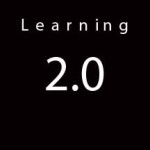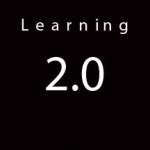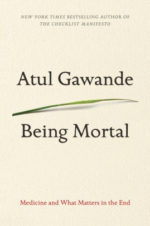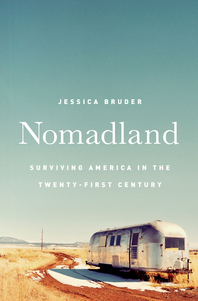CAVA: Learning at Home, Not Home Schooling
Posted on | November 7, 2011 | Comments Off on CAVA: Learning at Home, Not Home Schooling
The California Virtual Academy has grown to become a mid-sized school district, enrolling more than 10,700 students who study at home. But CAVA officials are quick to disclaim that the organization is in the home schooling business. As traditionally understood, home schooling is a vehicle for parents to gain virtually complete control over what and how their children learn. CAVA, in contrast, is a highly developed curriculum linked to its own pedagogy, testing, and monitoring systems. Students learn at home, usually with mom as a teacher, but the learning system is highly engineered.
Indeed, CAVA is the largest existing test bed for the learning systems devised by the for-profit firm K-12, which actively markets its products to school districts and individuals. Rather than being understood as a vehicle for home schooling, CAVA is better thought of as a new production system for learning, highly designed yet flexible. It provides a substantial amount of agency for students and parents to tailor their learning, but it requires much more active engagement from them than attending a brick and mortar school.
In a case study just published on this site, Laura Mulfinger and I describe the development of virtual education and visit with CAVA teachers and families.
Adding a Third Chair to the Bargaining Table
Posted on | October 18, 2011 | Comments Off on Adding a Third Chair to the Bargaining Table
[This post can also be found on the Huffington Post and at Thoughts on Public Education.]
Sometimes the most interesting political commentary is found in the comics…or in the ads.
Monday’s editions of the Los Angeles Times, Daily News and La Opinion carried a full-page ad from a coalition of civic and community organizations aimed at influencing the negotiations between the Los Angeles Unified School District and its teachers, represented by United Teachers Los Angeles.
The ad itself is pretty bland. “Don’t hold us back,” is not exactly a searing catch phrase. But the underlying issues are explosive: teacher evaluation, employment security, and school-site determination of work rules.
Essentially, the ad’s sponsors are drawing up a third chair to the bargaining table. They are attempting to influence both labor and management, but clearly they are in line with the positions and issues articulated by Superintendent John Deasy last summer. The increasingly bold and strident parent and community voice, amplified and modulated with foundation money, changes the politics of collective bargaining and challenges the union’s historic claim on parent loyalty.
In terms of Los Angeles politics, Monday’s ads are at least a semi big deal. Usually, collective bargaining holds little interest for parents and their organizations. It’s thought to be too boring and technical, something best left to the experts to sort through. But historically, when parent and community voice is activated, it tips the political balance. Decades ago, in The Changing Idea of A Teachers Union, my research colleagues and I examined scores of contract negotiations. We found that the usually silent parents were powerful when they got riled up. Thus, the admonition of political analysis: “when a fight starts, watch the crowd.” Read more
Finding the Intersection of “Be Nice” and “Know a Lot”
Posted on | September 28, 2011 | Comments Off on Finding the Intersection of “Be Nice” and “Know a Lot”
No Child Left Behind is apparently disappearing with a whimper, or at least a waiver. The originally bipartisan law has become a bad brand.
The pragmatics of the law’s demise rest in its rather silly calculation of test scores, and the backloading of expectations so that in the final years of the law the majority of schools in the United States would be labeled as failures, something that no state, governor, or education secretary could stand politically.
But the problem with the whimpering exit is that we haven’t gotten to the root of the matter or had the political debate about what we want from the schools.
In a recent column Jeff Camp raises the question of the content of student character: whether and how it should be taught and evaluated. “A simple ‘character score’ would be of little use,” he writes, “the true point of this kind of evaluation would be to drive conversations and self-reflection about things that actually matter.”
But even reflecting on things that matter or engaging in “performance character,” does not take place without context. One needs to know how to connect personal niceness with the nation’s history and struggles. We are not doing such a good job at that.
A recent Southern Poverty Law Center study written by Kate Shuster with a forward by Julian Bond found that academic standards virtually ignore our civil rights history. Or when taught it turns into a fable: there used to be segregation, then Dr. King came along, and now everything is alright.
The ability to make sense of history, and thus to ‘act nice’ in a social sense, rests, on knowledge coupled with schooled training in public action. Action without knowledge is simply gut-level response and no-nothing politics. Knowledge without action is a waste: test scores without a purposeful anchor. (Shuster, whose doctoral research at Claremont Graduate University finds a lack of efficacy in state minimum competency tests, illustrates that point in her dissertation.)
As California looks hard at how it assesses schools and students, it needs to look at the intersection of nice and knowledgeable.
(As to my own education in context, read below.)
Tags: Civil Rights > Kate Shuster > Southern Poverty Law Center
Re-Bundling Teaching, Testing, and Growing Up
Posted on | September 7, 2011 | Comments Off on Re-Bundling Teaching, Testing, and Growing Up
We need to rebundle.
For the past century, teaching, testing, and growing up have been tied into a bundle called school. My schooling—like that of every other student—was a mixture of maturation and mental exercise, of intense bonding among peers under the watchful eyes of adults, who understood more than we thought they did.
An illustration in the form of a short personal story:
When I was in high school, I had a history teacher named Annette Sheel. I am sure Miss Sheel, which was the proper form of address in those days, marched through the curriculum: I remember a thick book by Henry Steele Commager. But Miss Sheel changed my life, not because of the official course of study, but by saying, “I would like you to go with me tonight to hear a speech in Chicago.” I appeared disinterested. “Mary is going,” said Miss Sheel. The thought of riding to the city in the back seat of Miss Sheel’s Oldsmobile with a person of great interest sold the deal. We arrived a little late at Orchestra Hall and were ushered to an upper balcony. I quickly realized that we were nearly the only white people in the auditorium, and way down on the stage was a Black man, a preacher from Alabama, who began to speak in a voice and with authority I had never heard before.
He spoke of a bus boycott, and of being in jail in Birmingham, of the struggle to end a system of segregation that ruled the South by law and Chicago neighborhoods by practice and tradition. My worldview changed in the passage of an hour.
There were other teachers, too. Some told me I was stupid because I couldn’t spell. Still can’t. Letters move around in my head a little. I had to get over those teachers and those issues to get on with life. (I had a personal method of test prep for essay questions where dictionaries were not allowed and handwritten responses were required. I’d write three or four essays beforehand on topics that I thought related to questions that might be asked. I’d memorize the key words. I’d write it all out longhand to get into the practice of making it legible. My cursive is terrible, so I needed to train my hand as well as my spelling memory. Then, in the exam room, I’d tweak the essays just enough so that they answered the question the test asked.) Never got good grades until graduate school, when thinking and synthesis counted more than recounting facts and spelling.
Miss Sheel, it should be reported, was amazed at how we all turned out. At a class reunion 35 years later, my friends and I encountered her for the first time since we left high school. She stood ramrod straight, walking stick in one hand, with a straight-up Manhattan in the other. “My God, you all survived,” she said, essentially giving us a lifetime grade of “exceeds expectations.” Then she took a sip.
In Miss Sheel’s classroom, growing up, teaching, and testing were tightly bundled, as they were throughout most of public education. In the high-trust education institution that existed for the first six decades of the past century, a teacher’s grade book and periodic report cards were the definitive and authoritative statements about a student’s achievement. External testing was relatively unimportant, except for the relatively few students headed toward selective colleges and universities for whom scores on the SAT or the ACT were weighty. Teachers also became gatekeepers and sorters of students in formal and informal ways, pointing students toward college or toward the schoolhouse door. Even the teenager in Miss Sheel’s class knew race and social class coded that student sorting.
In the intervening decades, public education has moved from a high-trust and organizationally closed institution to one that is low trust and externally examined. Read more
Tags: Growing Up > Maturation > Teaching > Testing
The Elements of Learning 2.0: Developing the New Basic Skills
Posted on | August 6, 2011 | Comments Off on The Elements of Learning 2.0: Developing the New Basic Skills
Learning to collaborate and to solve ill-defined problems are to the 21st Century what industrial discipline was to the last hundred years, according to those who have studied what employers and society need. They need to be considered basic skills just as are reading, math, and science, and they are one of the key elements of Learning 2.0.
By the turn of the millennium, it was clear that jobs requiring routine thinking and skills were giving way to those involving both higher levels of knowledge and also some applied skills, such as expert thinking and complex communicating that are not well captured by most current educational standards or taught in the conventional curriculum. Teamwork, for example, is taught mostly in extra curricular activities.
But how to do this? If we as a society want creativity, if we want working together where do we teach it? How do we assess it? The current policy path links new basic skills with a new generation of tests that will be a part of the Common Core of Standards.
But the tests and the Common Core face a very long developmental chain and growing political opposition. A whole series of decisions has to fall the right way for tests and curriculum to emerge and be adopted. And all that happens before classrooms start to change.
Consider, for a moment, a parallel policy pathway. Instead of using educational policy to produce new tests that are to drive instruction, why not turn the process upside down and create accessible forms of learning that involve the new basic skills? Let changes in learning drive the tests.
By reversing the process, we would adopt the developmental strategy of “permanent Beta testing” made famous at Google. Get changes in learning and on-the-ground evaluation first, and build tests and curriculum based on the experience of thousands of users. Start from the bottom, not from the top. Cognitive psychologist Daniel Willingham, whose Why Don’t Students Like School? should be on everyone’s reading list, argues that seeing what works requires some kind of assessment plan be in place and that measuring 21st Century Skills is extremely difficult. Yet, there exist demonstration projects that carry with them both the capacity to evaluate and some experience developing instrumentation and professional practice. (In a longer essay, I discuss the potential of study groups, project-based learning, and rethinking subject matter teaching to introduce 21st Century skills.)
We can probably advance 21st Century skills as much through grounded experimentation as we can through explicit public policy.
Tags: 21st Century Skills > ConnectED > Daniel Willingham > Irvine Foundation > New Basic Skills > New Tech Network > Uri Trisman
Learning 2.0 So Far: Breakthrough Ideas and Political Deadlock
Posted on | July 18, 2011 | Comments Off on Learning 2.0 So Far: Breakthrough Ideas and Political Deadlock
 This spring, I posted Learning 2.0, a short essay on how we might reshape school reform to recognize the tremendous changes in information processing and their implications for teaching and learning.
This spring, I posted Learning 2.0, a short essay on how we might reshape school reform to recognize the tremendous changes in information processing and their implications for teaching and learning.
I’ve been gratified by the response. The original post has been reprinted and passed along, which is what I had hoped, and over the past several weeks I have worked to amplify it. Learning 2.0 is built around the notion that it is possible for us to replace the batch-processing mode of education that has been in place for a century. Both our norms about “the grammar of schooling” and the statutory foundations of public education reinforce age-graded instruction, labeling students as ahead or behind, and the firm belief that it should take exactly nine months to learn Algebra I. Moreover, students should learn it in eighth grade to get ahead of the Japanese Chinese.
Douglas Thomas and John Seely Brown write about A New Culture of Learning, which I compare with John Dewey’s classic School and Society written more than a century ago, and the new culture faces some of the same possibilities of defeat and distortion as Dewey’s did.
Clayton Christensen, Michael Horn and Curtis Johnson make the case that computer aided, Internet delivered instruction is a disruptive technology, like the transistor or digital photography. I believe they are partly right, but only partly. Technology adoption in education is not like technology adoption in the consumer or commercial marketplace; it’s a political battle with existing and emerging interests.
Part of the political battle will come over the creation of a new production system for education. Yochai Benkler, in The Wealth of Networks, makes the case that peer production—building knowledge through a wide-spread cooperative network—is an important new mode of knowledge delivery that challenges the existing, capital intensive, media and knowledge production oligarchy. Society will witness a massive political fight over access and copyright. And unless educators cede the battle before it’s begun, there will be another fight over whether educators or corporations design learning.
Teachers and their unions are particularly vulnerable in this battle. Unions are always vulnerable when a production technology changes, and neither national union seems to realize that changes in teaching and learning pose an elemental challenge to their existence. These changes also offer unions the greatest opportunity they have had since winning collective bargaining rights.
In other published pieces, and some more to come, I amplify on the elements of Learning 2.0. Remix makes the case for combining head and hands learning, and examines the potential of Linked Learning. In Student as Worker, I expand on the idea that students are the real workers in the education system, and that we should build on that reality. In the post below, I advocate amending our idea of basic skills, recognizing the ability to solve difficult, ambiguous problems and to collaborate with others as essential 21st Century skills, and we should find ways to build them into our designs for instruction and evaluation.
In future posts, I write about the need to customize education, essentially developing an individual education plan for all. Second, we should unbundle the relationship between teaching and testing.
The converging trends of technology, the demands on public education for high standards for all, and the fiscal crisis sweeping California make this the best of all times to design Learning 2.0, to create law, structure, and financial mechanisms to bring it about. I argue that it is the best of times. But to paraphrase Dickens, it’s also the worst. The politics we have now will not get us to Learning 2.0. Unless we can make our political system more productive, we will continue to have auditions of ideas without opera that brings them together.
I am drafting a piece about a new educational infrastructure that might help.
Aging Boomers and Young Latinos: Max Benavidez to Lead Panel at Capitol
Posted on | June 23, 2011 | Comments Off on Aging Boomers and Young Latinos: Max Benavidez to Lead Panel at Capitol
Two demographic trends will define much of the next quarter-century: aging Baby Boomers and the coming of age of young Latinos. CGU alum, Dr. Max Benavidez, has organized a fascinating conference in Washington, DC on July 7. The conference description asks: Are they on an economic collision course, or can they establish a new social contract that strengthens American society and its economic security? This is the trillion dollar question as experts from the UCLA-USC Latinos and Economic Security Project assess the economic consequences for the nation, demonstrate the need to re-frame this debate, and seek a solution-oriented approach to the greatest inter-generational and inter-ethnic challenge of this century. More here including how to register.
The Elements of Learning 2.0: Students as the real workers in education
Posted on | June 21, 2011 | Comments Off on The Elements of Learning 2.0: Students as the real workers in education
 Most education reforms start with the premise that adults need to work harder so students will learn more. But ultimately, maybe quickly, that premise is self-defeating. Regardless of the pedagogy used, who governs the school, or how long teachers toil, students are the real workers in the system. Building around that reality is one of the five key elements to bring about Learning 2.0, the next full-scale version of public education.
Most education reforms start with the premise that adults need to work harder so students will learn more. But ultimately, maybe quickly, that premise is self-defeating. Regardless of the pedagogy used, who governs the school, or how long teachers toil, students are the real workers in the system. Building around that reality is one of the five key elements to bring about Learning 2.0, the next full-scale version of public education.
Thinking of students as education workers invites us to consider them as producers rather than consumers of education. In truth, of course, they are both. Outside of education, and particularly in medicine, the system has recognized that good outcomes depend much more on what clients do than what professional practitioners do. The “prosumer” relationship, as futurist Alvin Toffler called it, is built into integrated health care systems.
Health maintenance organizations provide their clients with handbooks and web sites for self-diagnosis and treatment. The standards of professional care are available to clients and their advocates. Rather than threatening professionals, building client knowledge allows a more productive and deeper relationship to exist between patient and professional.
If students are the real workers in the education system, those who design public education need to ask what sort of responsibility is it reasonable to ask students to take for their own education, and how the system should be constructed to best motivate students to take such responsibility. Read more
Tags: AVID > Bright Prospects > Clayton Christensen > High Tech High > Michael Horn > Mihaly Czikszentmihalyi > student as worker > Ted Sizer
Insanity or Courage?
Posted on | June 2, 2011 | Comments Off on Insanity or Courage?
Last evening, I had the pleasure of moderating a panel discussion at a reunion of Education Pioneers, an organization that looks for and trains out-of-classroom talent for education reform. The conversational stars of the evening were Maria Casillas, who flunked retirement to rejoin the Los Angeles Unified School District to head its efforts at connecting school and family, and Drew Furedi, who is working on the highly charged area of teacher assessment among other tasks as Policy and Program Development Advisor.
The Pioneers ask me to make some opening remarks, an approximation of which follow.
Einstein or Churchill?
It has come to my attention that reforms recycle. Recycling may be good for the environment, but what of educational progress? It depends on whether you believe Einstein or Churchill.
Einstein’s definition of insanity was “doing the same thing over and over again and expecting different results.” Winston Churchill’s definition of courage was “moving from failure to failure with undiminished enthusiasm.” So which is it? Read more
Tags: Drew Furedi > Education Pioneers > LAAMP > LEARN > Maria Casillas
The Elements of Learning 2.0: A Remix of Knowledge Acquisition and Practice
Posted on | May 25, 2011 | Comments Off on The Elements of Learning 2.0: A Remix of Knowledge Acquisition and Practice
 The words “remix” and “mashup” entered the vocabulary as descriptors of life in the digital age. They are also key to what I am calling Learning 2.0, the next full-scale version of public education.
The words “remix” and “mashup” entered the vocabulary as descriptors of life in the digital age. They are also key to what I am calling Learning 2.0, the next full-scale version of public education.
At the simplest level, these new terms are represented by three teenagers using Apple Garage Band to combine bits and pieces of music into their own composition. At a more complex level, the process of remix changes the nature of authorship, as it did for a recent book on digital learning in which the authors of the draft posted their text for comment and addition. Hundreds of people responded, and the book draft is still undergoing revision even after its publication by a university press.
Remix and mashup are linguistic markers for a growing practice of peer-produced learning, one that extends the instinct for tinkering and play into an approach to learning and scholarship. As pedagogy, these new words signal moving away from consumption to participation and from concentrating our attention on teaching to concentrating on learning. The shift in learning is not necessarily computer driven. As Connie Yowell, director of education at the MacArthur Foundation notes: “Our digital media and learning initiative is not about technology, turning our backs on teachers, or throwing out traditional literacy skills. It is about what people do with digital media — especially the potential for peer-based learning.” Indeed, the instinct for peer learning by doing infused the philosophy of John Dewey a century ago.
A glimpse of this world can be found in Exhibition Night at High Tech High in San Diego. Students at HTH learn from a pedagogy that deliberately integrates things that schools and society have sought to separate: head and hands, school and community. Thus, students in biology demonstrated their latest fieldwork, the DNA typing of samples from San Diego Bay. The students’ trips to the shore are not casual encounters, but real science that has led to six published books. Science is linked with history and language arts. As biotechnology teacher Jay Vavra says pointing to the English classroom across the hall, “Remember Cannery Row? I’m Ricketts; he’s Steinbeck.” Read more
Tags: California > Connie Yowell > High Tech High > LAPD > LAUSD > Linked Learning > MacArthur Foundation > School of Global Studies






